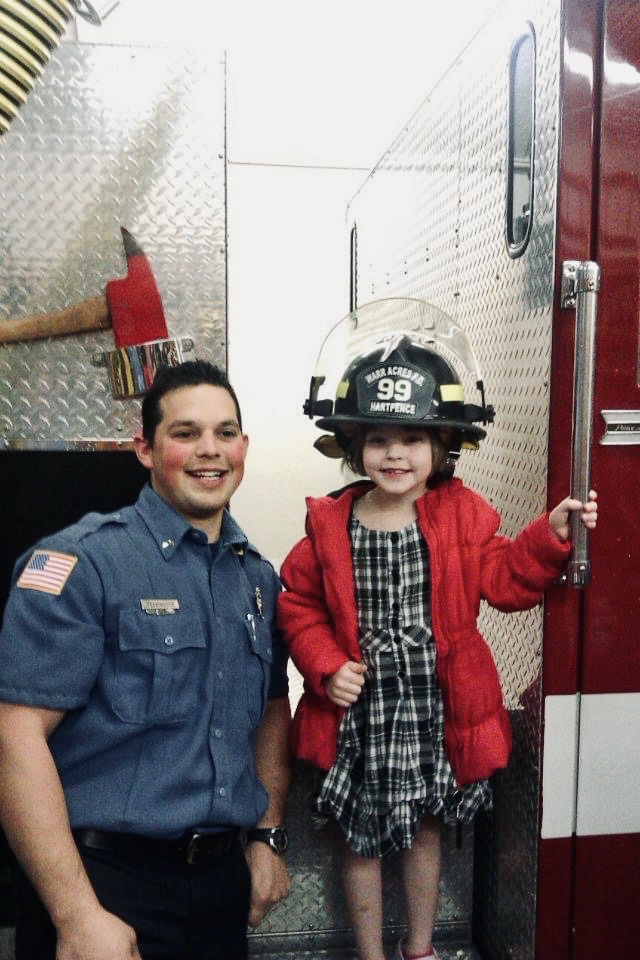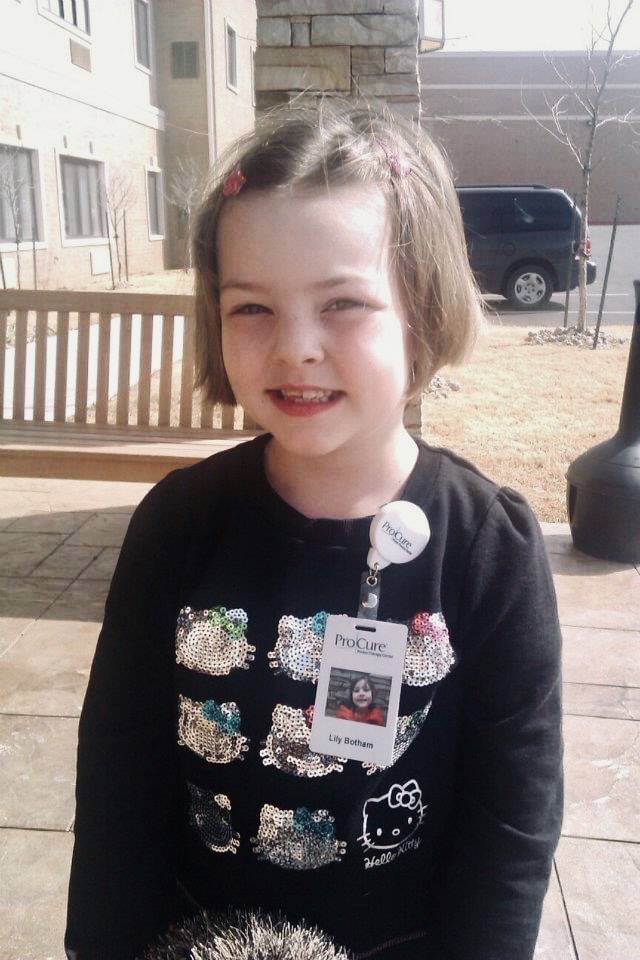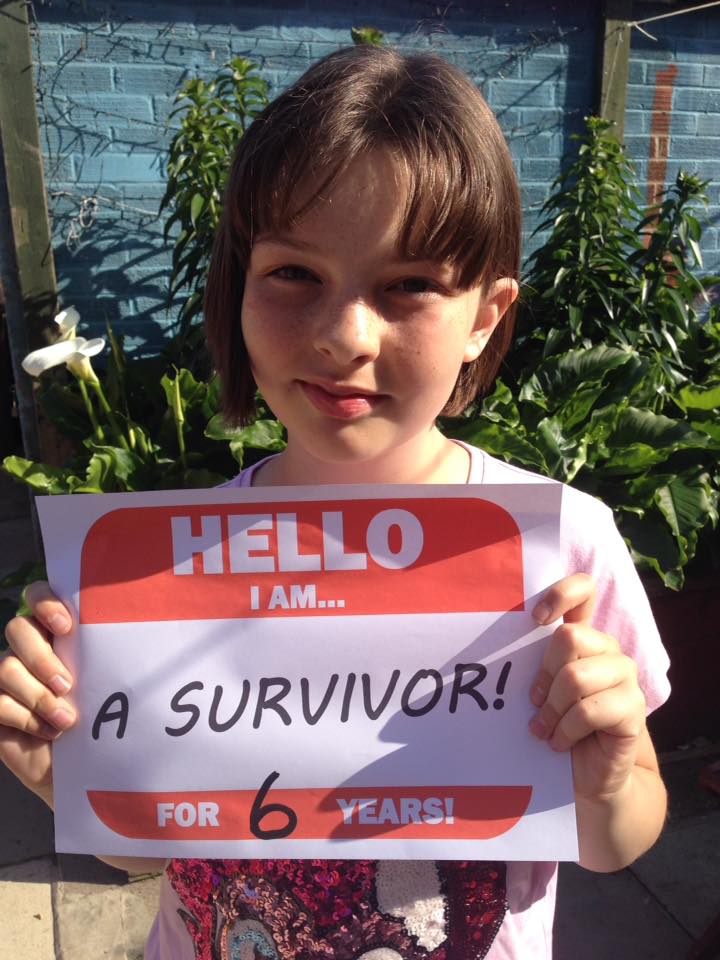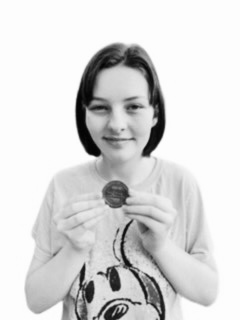The year is 2012, just after Christmas. While most young children are occupied playing with friends and sharing the new toys Santa brought, six-year-old Lily Rose Botham was rushed into the hospital and subjected to 16-hour brain surgery.
Plagued by headaches and too sick Christmas Day to interact with her family, Lily’s parents brought her into Leeds hospital, where an MRI revealed a brain tumor that needed surgery immediately. The tumor had wrapped itself around Lily’s nerves, making the surgery very complicated and high risk.

Surgeons removed the tumor bit by bit, and finally, after hours of being under, the procedure was complete.
After spending over a week in intensive care and a total of three weeks in the hospital post-surgery, Lily had to relearn many of the things that are second nature to most people, like eating and walking. The road to recovery would be long, but it was time to discuss the next phase of treating Lily’s cancer.
For children like Lily, who are diagnosed at such a young age and whose brains are still developing, finding a suitable form of treatment was crucial. When her doctors suggested proton therapy as a treatment option to help minimize further brain damage, the choice seemed obvious.

Brain and spine tumors are the second most common cancers in children.
The brain controls many vital facets of everyday life, including emotions, thought, speech, vision, hearing, and movement. After already undergoing damage from surgery that affected her hearing, the collateral damage to healthy areas of the brain from traditional radiation likely would have left her deaf.
During this time in 2012, proton therapy in the UK was limited. While being treated in Europe would have possibly been more convenient, the idea of it was daunting to Lily’s mother, Tracy, because of the language barrier. When Lily’s team of doctors suggested treatment in the United States, specifically Oklahoma, Tracy knew it was the best option.
Coincidentally, Tracy had a cousin already living in Oklahoma that offered to help them with anything they may need. The comfort of having some family close by only reinforced the decision.
The length of the treatment process for proton therapy in children is typically five to seven weeks. Lily was prescribed 33 treatments and spent almost 8 weeks at Oklahoma Proton Center.
Nine years later…
I recently had the opportunity to visit with Lily and her mother, Tracy, via a Zoom call and see how she was doing nearly 10 years post-treatment. At sixteen years old, Lily sits at the computer somewhat shy and leans on her mom often to share her experience.
Lily’s mother, Tracy, is animated and paladin during the call. A true warrior for her daughter’s cause. She tells of being nervous about coming to the United States on her own with Lily. A mother of four, Tracy had to leave the other three children home with their father to be able to give one hundred percent of her attention to Lily, who required lots of care.
One of her biggest fears coming to the US was getting used to driving on the opposite side of the road. After some practice, she had it in the bag! Tracy goes on to tell of meeting other families during their time here. Lily made many friends, but two other children left an impact on her. One of those children shared the same rare type of brain cancer as Lily.

When she wasn’t in treatment, Lily and her mother would visit local tourist attractions around Oklahoma City with some of the other families. The Oklahoma Western Heritage Museum and the Science Museum of Oklahoma, to name a few.
When asked what was one memory that stood out to them during Lily’s treatment, Tracy describes seeing Lily carried out of the treatment room on the shoulders of her radiation therapist with a big grin on her face. Lily required a wheelchair to get around for the first few years after surgery. This was just one small gesture that made a big difference to a mother who loved to see her daughter smile during these difficult times.
Tracy tells of how well taken care of they both felt during their time here. How there was always someone willing to help, so she didn’t feel she was doing it on her own. The manager at the hotel Lily and her mom stayed at drove them around to find some British chocolate.
“We were always looked after and constantly taken care of during our stay…” says Tracy.
I asked Lily how she was feeling years out from her treatment and if she experienced any side effects. Her mother lovingly jokes that the only sign she was being treated was her “waffle-head” from the fitted mask she wore during treatment that left indentations on her face.
Her hearing was impacted prior to her proton therapy treatments from her brain surgery. She still struggles with it but has learned to adjust. Lily also said she lost her sense of taste for a while, but it’s no longer an issue. Her days post-treatment were filled with MRIs and doctor’s appointments, so going back to “normal” life was complicated. Her mother adds…

“At just six years old, Lily was very aware she wasn’t the same after surgery. She would get upset when she couldn’t do all the things the other kids were doing. She got through it.”
At the young age of sixteen, Lily has already undergone a lifetime of struggles.
“It really put everything into perspective and made you realize how precious life is,” they exclaim.
Every day is a gift, and Lily plans on living each one to its fullest. She has dreams of someday working with children in a school or daycare setting. Her mother stays busy by keeping up with her 4 children. Lily and her mother share an experience that shaped them as people. When faced with devastating hardship, they gained strength, courage, and confidence by leaning on each other.
As Tracy looks over at Lily, smiling gently, you can feel the strong bond between the two of them. A bond defined by love. Unbreakable. Everlasting.
Authors Note: Oklahoma Proton Center treated approximately 200 children from the UK in 2011 through 2016. To this day, the legacy of all the UK children treated here is still very much alive. It lives in the stories staff members lovingly recount from those years. It lives on the walls where Doctor Seuss murals were painted to ease the nerves of young patients. And it lives on in the photos many of the UK patients still share with us via social media regularly.

